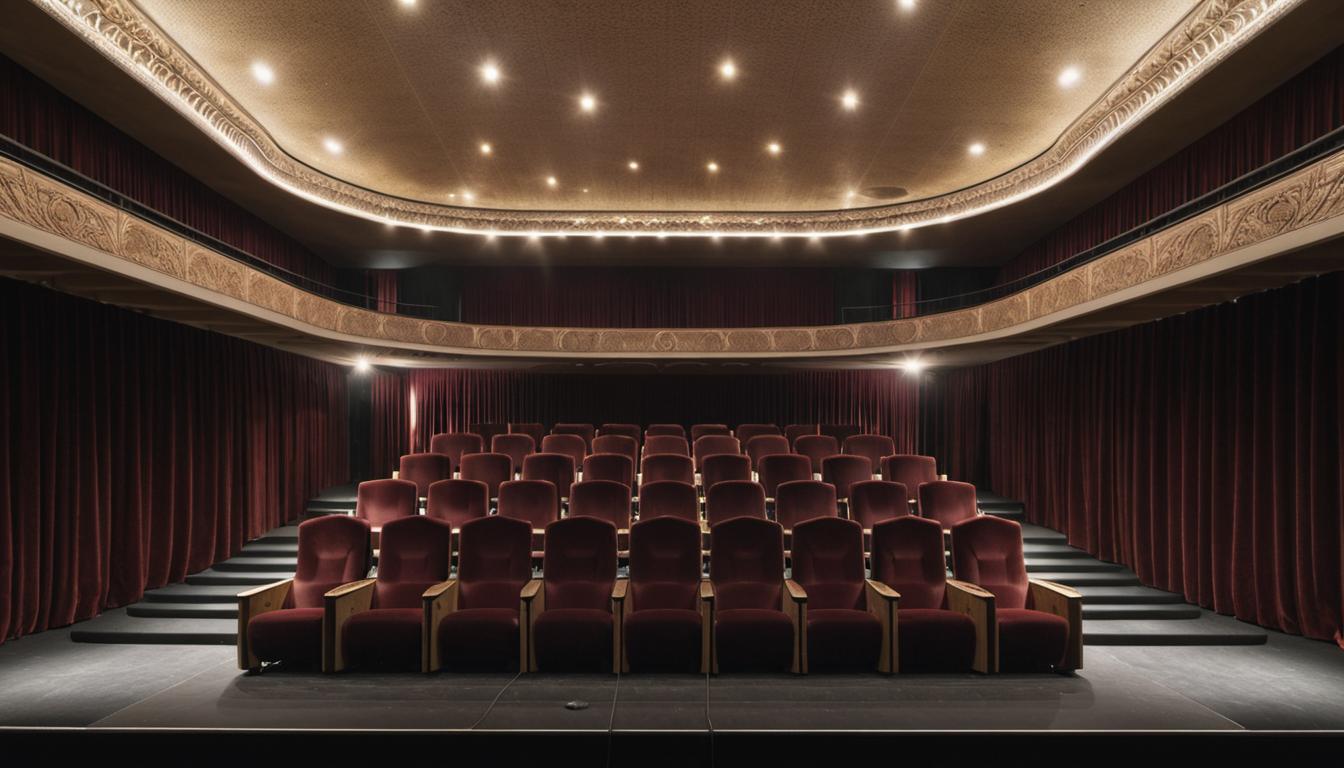Understanding Theater Acoustics
Theater acoustics refers to how sound is produced, transmitted, and received within a theater. A well-designed theater has acoustics that ensure high-quality sound, irrespective of a seat’s location. The purpose of theater acoustics is to create an immersive experience, making audiences feel essentially involved in the performance. Both art and science are intertwined in the acoustics, united towards creating perfect harmonies in a theater setting.
Main Factors Influencing Auditorium Acoustics
- Size of the Auditorium – The auditorium’s size influences the sound’s volume and reverberation. Bigger rooms have potential issues with clarity and volume, while smaller rooms may sound acoustically “dead.”
- Shape of the Room – Room shape affects how sound travels. Desirable reverberations are fostered by fan-shaped rooms or auditoriums with curved walls, whereas square or narrow, rectangular rooms should be sidestepped.
- Materials Present in the Room – Room materials impact reverberation time. The ideal is between 1.5 seconds to 2.5 seconds. Sound reflection can be intensified by hard, nonporous surfaces like windows and wooden floors, contributing to extreme reverberation, whereas sound absorption can be improved by soft, porous surfaces like upholstered chairs and curtains.
- Presence of Balconies and Orchestra Pits – Balconies or orchestra pits affect acoustics. Consideration should be given to the structures’ size, shape, and materials.
- Purpose of the Auditorium Use – Acoustic requirements will differ depending on whether the auditorium is used for both lectures and musical performances.
- Sound System – A premier sound system is vital for clear hearing, regardless of seating position.
- Space’s Atmosphere – Elements such as audience noise or environmental sounds can also impact the acoustics in the auditorium.
Key Architectural Elements Impacting Sound Design
The architecture of the theater heavily influences its sound design. Elements such as the shape of the room and the materials used for walls and ceilings play an instrumental part in controlling reflections and reverberation in theater settings, thus forming an integral part of acoustics.
The Role of Reflections and Reverberation
Reflections and reverberation are essential factors that can either enhance or impair sound quality in a theater. Properly executed, they can enrich the auditory experience. However, excessive reverberations can lead to muddled sounds and listener fatigue.
Sound Absorption and Its Importance
Sound absorption is vitally important in ensuring sound quality. By transforming sound energy into heat, it reduces reflections and controls reverberation. This process is enabled using sound-absorbent materials like carpets, drapes, and padded seats.
Sound Absorption and Its Importance
Sound absorption is vitally important in ensuring sound quality. By transforming sound energy into heat, it reduces reflections and controls reverberation. This process is enabled using sound-absorbent materials like carpets, drapes, and padded seats.
Importance of Optimal Speaker Placement
Strategically placed speakers are key influencers of the overall auditory landscape in a theater. Precisely positioning speakers contributes immensely to the theater’s acoustics and enhances the audience’s auditory experience.
Role of Seating Arrangement in Theater Acoustics
The seating arrangement in a theater doesn’t only define user comfort but also plays a meaningful role in determining acoustics. Since human bodies absorb sound, the audience composition at any given show will affect acoustics to a significant extent.
Choosing Materials for Walls and Ceilings
Materials used for walls and ceilings can play an instrumental role in controlling reflections and reverberation. Selecting the right materials can improve the diffusion of sound in the theater, thereby enhancing the auditory experience of the audience.
FAQs on Theater Acoustics Design
- What are the main factors to consider for auditorium acoustics?
The seven primary factors are the auditorium’s size, room shape, materials present, existence of balconies and orchestra pits, its intended use, sound system quality, and the space’s atmosphere. - Why does the size of a room affect its acoustics?
The auditorium’s size influences the sound’s volume and reverberation. While bigger rooms may wrestle with clarity and volume, smaller rooms might seem acoustically “dead.” - How does the shape of a room impact sound travel?
Room shape affects sound travel by either promoting or hindering reverberation. Unwanted reverberations are often produced in square and rectangular rooms, while fan-shaped rooms or those with curved walls encourage helpful dispersion of sound. - How do the materials used inside the auditorium impact its acoustics?
Room materials impact reverberation time. Hard, nonporous surfaces enhance sound reflection, while soft, porous surfaces aid sound absorption. - What is the role of a sound system in auditorium acoustics?
A superior sound system is key to clear hearing, regardless of a listener’s location. The sound system’s characteristics strongly influence the overall acoustics of the auditorium.
Recapping, the importance of mastering theater acoustics design cannot be overemphasized for architects, interior designers, and individuals within the real estate industry. With all the aforementioned elements coming together, the acoustics can fundamentally shape the theater experience for their audiences. Hence, understanding the crucial role of theater acoustics and incorporating them into their designs should be a key priority.






